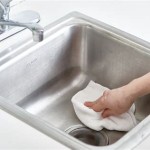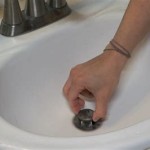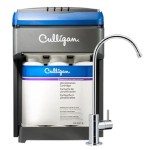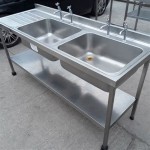```html
Stainless Steel Sink Top Mount: A Comprehensive Guide
The stainless steel sink top mount, also known as a drop-in or self-rimming sink, remains a popular choice for kitchen and bathroom installations. Its affordability, ease of installation, and durability contribute to its widespread adoption. This article provides a detailed examination of stainless steel top mount sinks, covering their advantages, disadvantages, installation procedures, maintenance requirements, and key considerations for selection.
Advantages of Stainless Steel Top Mount Sinks
Stainless steel top mount sinks offer several benefits that make them a practical and attractive option for various applications. These advantages stem from the material properties of stainless steel and the design characteristics of top mount installations.
Cost-Effectiveness: Compared to other sink materials, such as copper, granite composite, or fireclay, stainless steel is generally more affordable. The manufacturing process is streamlined, and the material itself is relatively inexpensive, resulting in a lower initial cost for the sink. This cost-effectiveness extends to installation, as top mount sinks typically require less labor and specialized tools than undermount or farmhouse sinks.
Ease of Installation: The primary advantage of a top mount sink lies in its straightforward installation process. The sink is designed to simply drop into a pre-cut hole in the countertop. A bead of sealant is applied around the rim to create a watertight seal, and clips or brackets are used to secure the sink to the underside of the countertop. This ease of installation makes it a suitable option for DIY projects and can reduce overall renovation costs.
Durability and Longevity: Stainless steel is renowned for its durability and resistance to corrosion. It is a non-porous material, which means it won't absorb liquids or harbor bacteria. Stainless steel sinks are also resistant to heat and impact, making them suitable for handling hot pots and pans and resisting damage from dropped items. The inherent resilience of stainless steel contributes to the long lifespan of these sinks.
Wide Variety of Styles and Sizes: Stainless steel top mount sinks are available in a vast array of styles and sizes, accommodating diverse aesthetic preferences and functional needs. Single-basin, double-basin, and even triple-basin configurations are readily available. Sink depths vary, allowing for the accommodation of different-sized pots and pans. The finish can also be customized, with options ranging from brushed stainless steel to polished stainless steel, offering different levels of reflectivity and scratch resistance.
Ease of Cleaning and Maintenance: Stainless steel is a relatively easy material to clean and maintain. Its non-porous surface prevents the absorption of stains and odors. Regular cleaning with soap and water is typically sufficient to maintain the sink's appearance. Abrasive cleaners should be avoided, as they can scratch the surface. Stainless steel cleaners are available to remove water spots and maintain the sink's shine.
Disadvantages of Stainless Steel Top Mount Sinks
Despite their numerous advantages, stainless steel top mount sinks also have certain drawbacks that should be considered before making a purchase. These disadvantages primarily relate to aesthetics and cleaning.
Visible Rim: The most common complaint about top mount sinks is the visible rim that sits on top of the countertop. This rim can collect dirt and grime, requiring more frequent cleaning. Some individuals find the visible rim aesthetically unappealing compared to the clean lines of an undermount sink. While newer designs often feature a low-profile rim, it is still a visible element in the kitchen or bathroom.
Limited Countertop Space: The rim of a top mount sink can slightly reduce the usable countertop space, particularly around the sink area. This reduction in space can be a concern in smaller kitchens or bathrooms where countertop space is limited. While the impact is minimal, it is a factor to consider when planning a renovation.
Potential for Water Trapping: The seam between the sink rim and the countertop is a potential area for water to trap, which can lead to mold and mildew growth if not properly sealed and maintained. Regular cleaning and inspection of the sealant are necessary to prevent this issue. Ensuring a properly applied and maintained bead of sealant is crucial for long-term performance.
Noise: Stainless steel sinks can be noisy when pots and pans are placed in them or when water is running. The thinness of the steel can amplify the sound. However, this can be mitigated by choosing a sink with sound-dampening pads or undercoating, which are designed to reduce noise and vibration.
Key Considerations for Selecting a Stainless Steel Top Mount Sink
Selecting the right stainless steel top mount sink requires careful consideration of several factors, including the gauge of the steel, the number of basins, the size and depth of the sink, and the finish. Evaluating these factors will ensure that the chosen sink meets the specific needs and preferences of the user.
Gauge of the Stainless Steel: The gauge of stainless steel refers to its thickness. A lower gauge number indicates thicker steel. For sinks, a gauge of 18 or 16 is generally recommended. Thicker steel is more durable and resistant to dents and scratches. While 20-gauge steel is more affordable, it is also more prone to damage. Investing in a higher gauge sink will typically result in a longer lifespan and better performance.
Number of Basins: The number of basins depends on the user's needs and preferences. Single-basin sinks are suitable for smaller kitchens or bathrooms where space is limited. Double-basin sinks provide separate areas for washing and rinsing, which can be convenient for food preparation and dishwashing. Triple-basin sinks are less common but can be useful for specialized tasks, such as soaking large pots and pans. The choice of basin configuration should be based on the typical usage patterns in the kitchen or bathroom.
Size and Depth of the Sink: The size and depth of the sink should be appropriate for the available countertop space and the types of items that will be washed in it. A deeper sink is better for accommodating large pots and pans. However, a deeper sink may also require more bending, which can be uncomfortable for some users. The sink's dimensions should be carefully measured to ensure a proper fit in the existing or planned countertop cutout.
Finish of the Stainless Steel: The finish of the stainless steel affects its appearance and scratch resistance. Brushed stainless steel has a matte finish that is less likely to show fingerprints and water spots. Polished stainless steel has a shiny finish that can be more visually appealing but is also more susceptible to scratches and smudges. The choice of finish should be based on the user's aesthetic preferences and their tolerance for maintenance.
Sound Dampening: As mentioned earlier, stainless steel sinks can be noisy. Look for sinks that have sound-dampening pads or undercoating applied to the underside of the basin. These features help to absorb vibrations and reduce noise levels. The presence of sound dampening can significantly improve the overall user experience.
Certifications and Standards: Consider purchasing sinks that meet relevant industry standards and certifications, such as those from the National Sanitation Foundation (NSF). These certifications ensure that the sink is made from safe materials and meets specific performance requirements. Checking for certifications can provide added assurance of the quality and reliability of the product.
Budget: Stainless steel top mount sinks are available at a wide range of price points. Setting a budget before starting the search can help narrow down the options and prevent overspending. Consider the long-term cost of ownership, including maintenance and replacement costs, when evaluating different sinks. Investing in a higher-quality sink may result in lower long-term costs due to its durability and longevity.
By carefully considering these factors, consumers can select a stainless steel top mount sink that meets their specific needs and preferences, providing years of reliable and functional service.
```
Fsd22113 Top Mount Single Stainless Steel Kitchen Sink

Blanco Plenta 6 Single Bowl Stainless Top Mount Kitchen Sink

Rubine Top Mount Double Bowl Stainless Steel Sink Classic R25 Series

K800cn Top Under Mount Use Kitchen Sink K800cngm Gunmetal Nano

Higold 304 Stainless Steel Kitchen Sink Comes With Faucet Chopping Board Package Can Use For Both Top Mount Or Under Creative Home Hardware Supplier Singapore

Franke Tagged Kitchen Sinks Lucky Khoon Bathroom Studio

Fsd21404 Top Mount Single Stainless Steel Kitchen Sink

Kitchen Sinks Ping Guide Kohler Singapore

Rubine Top Mount Stainless Steel Kitchen Sink Elegant Series Uniqool

Franke Bell Bcx 610 61 Stainless Steel Sink Top Mounted







